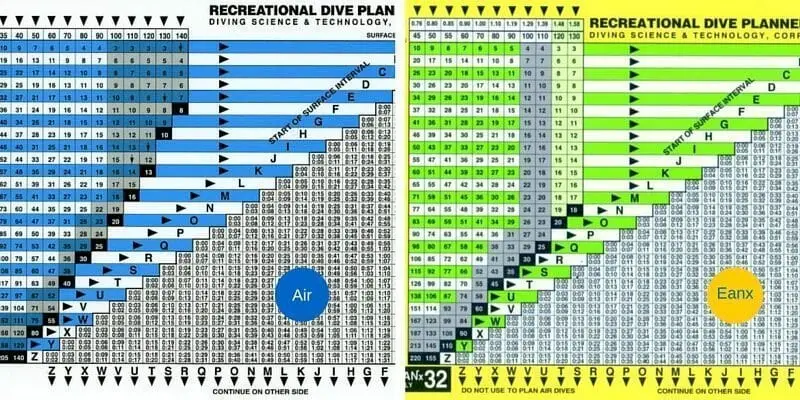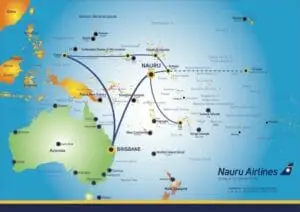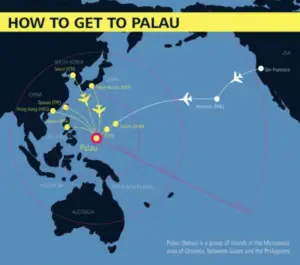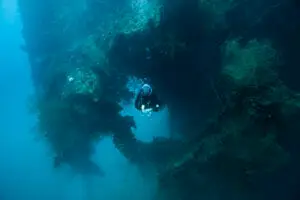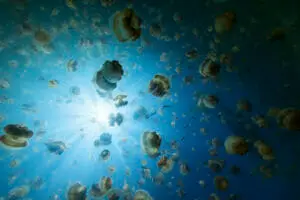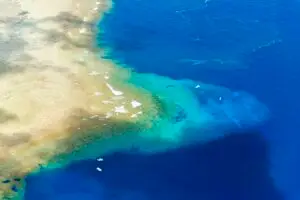Nitrox, We Love You. We do not yell it out loud, but here in Palau, we do love Nitrox diving.
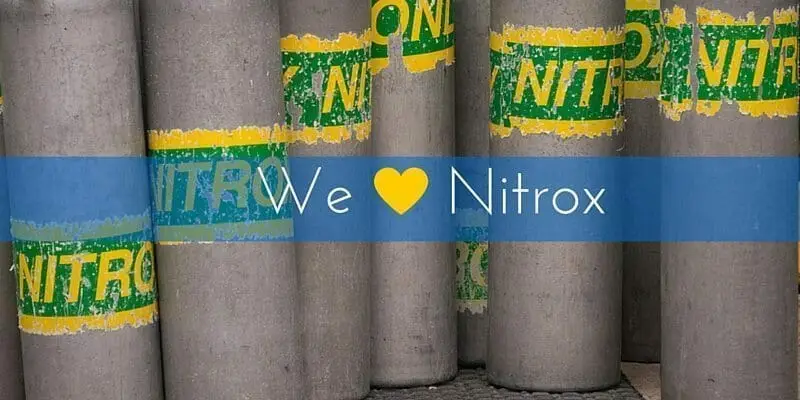
What is Nitrox?
Nitrox or more formally known as Enriched Air Nitrox is a fancy name for oxygen enriched air. The regular compressed air we use on a dive consists out 78% nitrogen, 21% oxygen, and less than 1% of argon, carbon dioxide, and other gasses.
What are the benefits of Nitrox diving?
When diving in shallow waters, your remaining air is often the factor that determines when you have to head back to the surface. However, as you dive deeper, most divers will see a shift where it is the No Decompression Limit (NDL) that requires them to ascend.
Your NDL is based on the amount of nitrogen that is absorbed by your body tissues and the rate it will leave your body as you ascend. When you lower the amount of nitrogen available to be absorbed, it takes longer to reach that point.
Imagine you are finally ready to start your dream dive on Blue Corner. Ever since you read it was voted the best dive site in the world, it has been your dream.
You plan on dropping on the east reef, heading towards the bottom at 90 feet, then up to 75 to explore the cavern. The final part is to spend time on the plateau around 50 feet.
Your computer or tables tell you that if you spend all your dive at 90 feet, you only have 20 minutes bottom time. Depending on the nitrox mix you will use you can now double your bottom time at the same depth. In this case, the primary benefit of diving with oxygen enriched air is that you will extend your bottom because you absorb less nitrogen.
Diving with Enriched Air for a Safer Dive or a Longer Dive?
Common belief is that Enriched Air Nitrox (EAN) will give you a safer dive. This depends on how you apply the benefits of Nitrox diving to your overall dive planning. Some divers have a higher risk of a Decompression Illness (DCI) than others. These includes older divers, those that are overweight and yes, sorry to say, those with hangovers.
If you wish to increase your safety margin you could use an enriched air blend and then plan your dive with the regular dive tables instead of using the nitrox diving tables or you can set your computer to air instead of using the nitrox settings on your computer. Because you will absorb less nitrogen, this means you have a greater safety margin without reducing the dive time.
In real life, not too many divers use nitrox and dive a regular air profile. Most of us are comfortable with the level of risk that the dive tables and dive computer algorithms use. Divers who are certified as an enriched air diver can extend their bottom times, without increasing the level of risk.
Either group of divers, those wanting a safer dive or those wanting longer bottom time, will find that on dives below 60 feet or 18 meters diving with nitrox is beneficial.
What are the Limits and Drawbacks of Nitrox Diving ?
While the use of nitrox can provide a safer dive, there are some hazards associated with it. Therefore, you should be properly trained during a nitrox diving course. As we are a PADI dive center, we offer the PADI enriched air diver course.
How Deep Can You Dive With Nitrox?
EAN-XX, where the XX is a number representing the percent oxygen is the common way we see EAN referred to. EAN-32 contains 32% oxygen. For the enriched air diver, the percent of oxygen is of critical importance as it will determine the maximum depth they can go before the air starts to poison him.
Oxygen becomes toxic under pressure. This means the higher the percentage of oxygen in the breathing gas blend the less depth you will have for a safe dive.
While individual tolerances differ, let’s say you’ll fill your nitrox tank with 100% pure oxygen, your nitrox tables and computer would not let you dive deeper than 6 meters, but expect all alarms to go off before you reach 4 meters or 12 feet.
If you would ignore the signals and all the bells and whistles and went as deep as 10 meters, you will suffer from oxygen toxicity, and you will most probably drown because you are not able to control your body and keep your regulator in your mouth because of the convulsions. This is the reason you must be certified to dive with any Nitrox blend.
That said, there is no one size fits al answer to the question “How deep can you dive with Nitrox?” It all depends on the blend and your dive plan. A rule of thumb is that lower percentages of oxygen do allow you to dive deeper.
What Will You Learn During the PADI Enriched Air Diver Course?
The PADI enriched air diver course may be the easiest of all of the certifications. The knowledge segment is an expansion of some of the gas laws you learned in the open water and advanced courses. It expands on the symptoms of oxygen toxicity and how to calculate your maximum safe depths using nitrox diving tables referred to as Maximum Operating Depth or MOD.
You will learn how to operate a gas analyzer and record your results. There are no confined water (pool) exercises. Your open water dives will have you start by analyzing your gas blend and record the results. You will use the results to plan your dive, either using the EAN dive tables or by setting the oxygen content into your nitrox dive computer. After that, the dive is no different than any other dive.
We encourage all enriched air diver certified divers to use the appropriate EAN-XX while diving any of our world class dive sites. We do not have an extra charge for Nitrox as it is included in our Standard Dive Package.
If you are not already certified as an oxygen enriched air diver, your trip to Palau is the perfect time to add that certification. Let us know when you are making your reservation that you are interested in a nitrox certification class, and we will get back to you to organize it.
Please feel free to contact us directly if you would have any questions. We love to hear from you.


